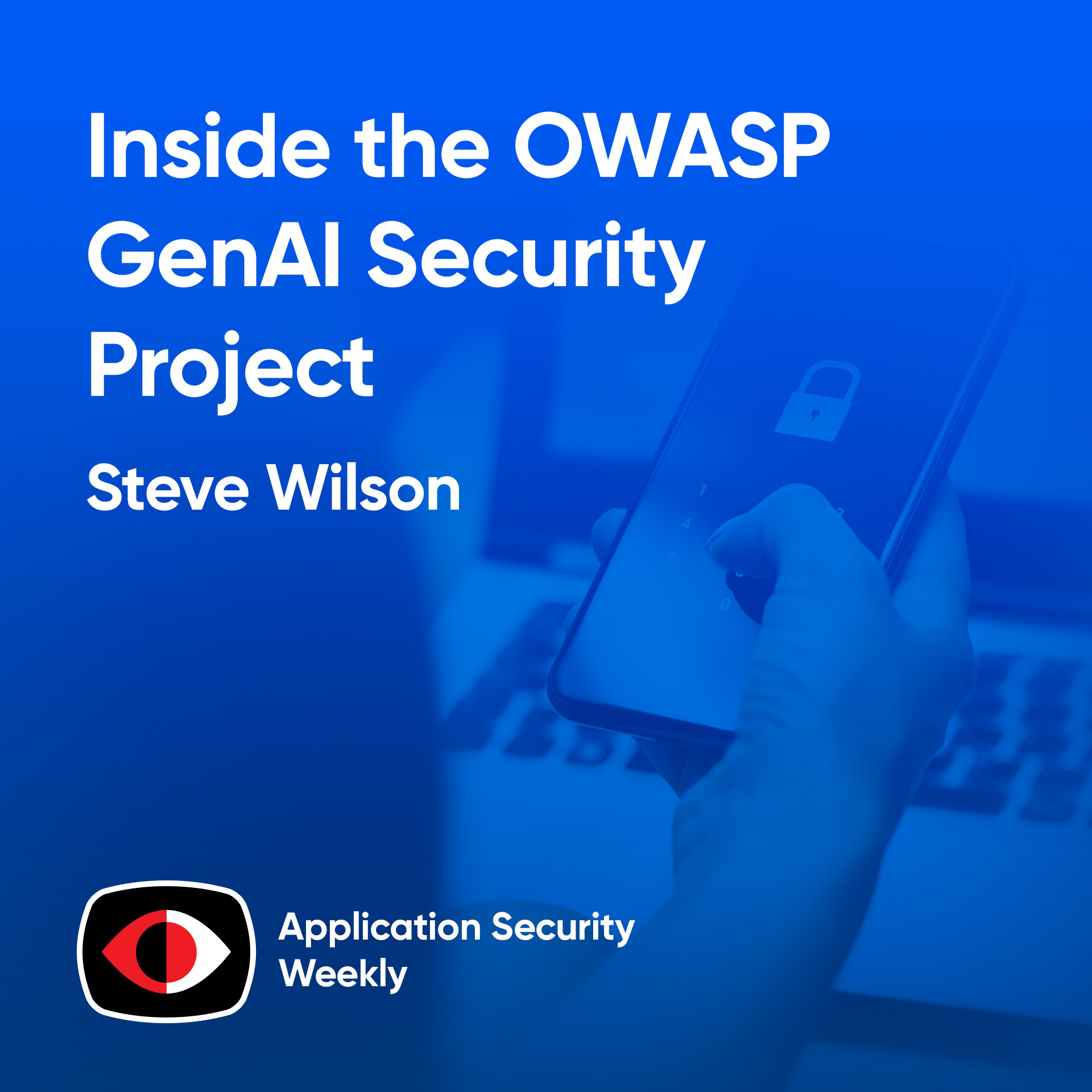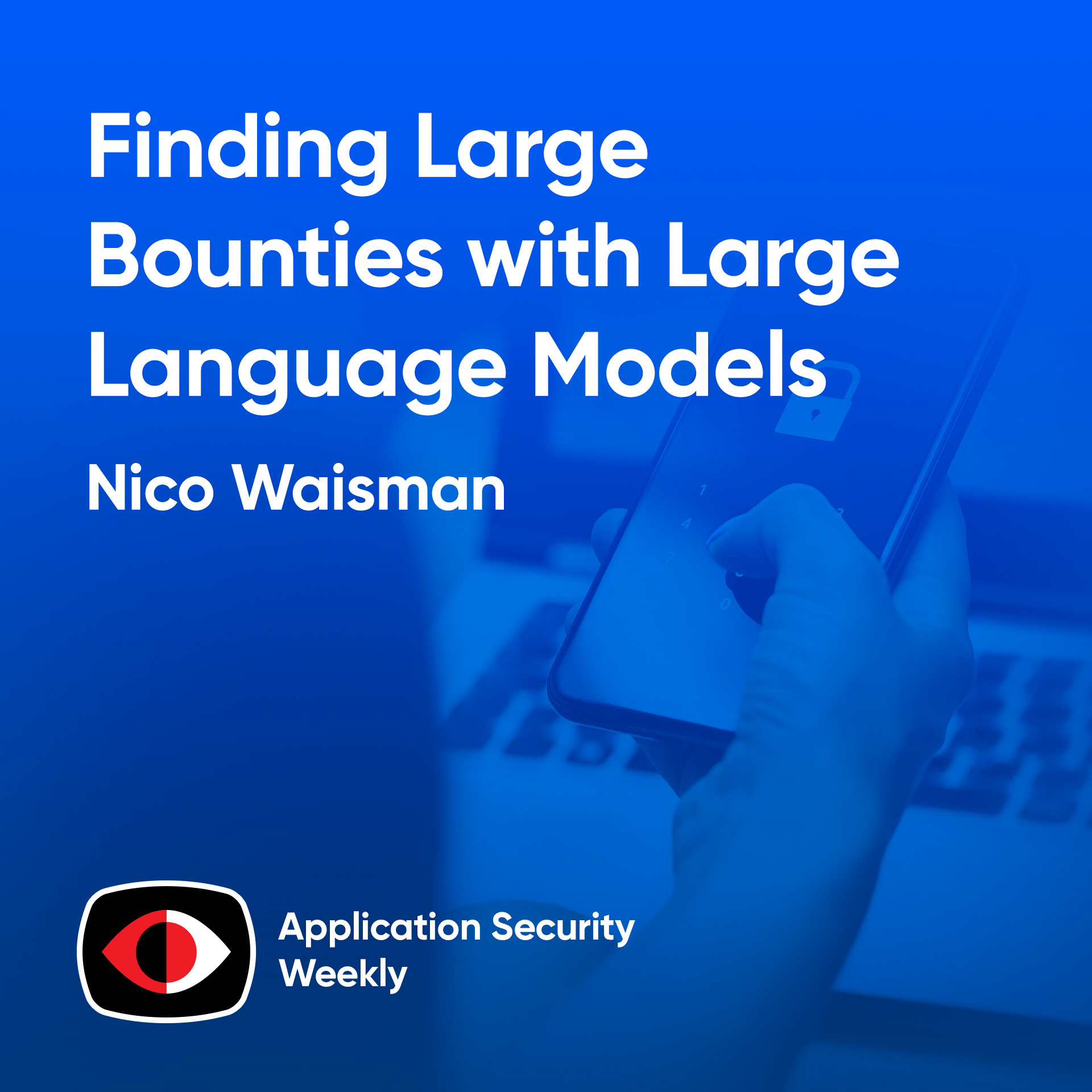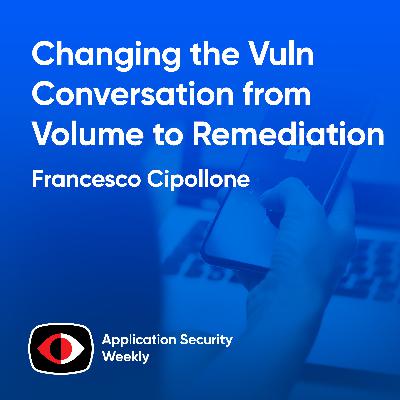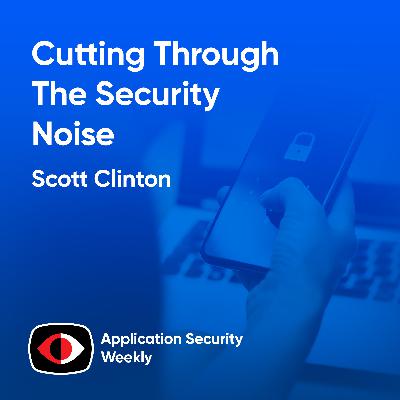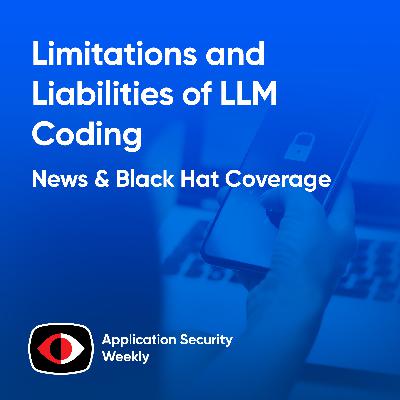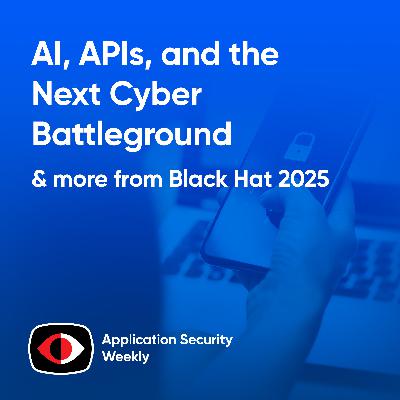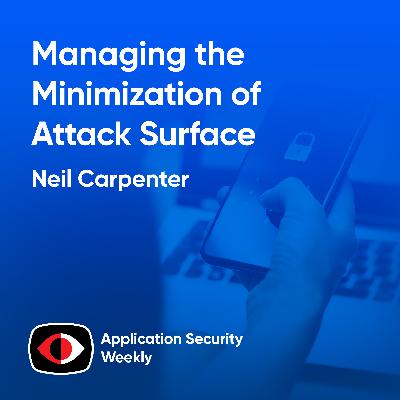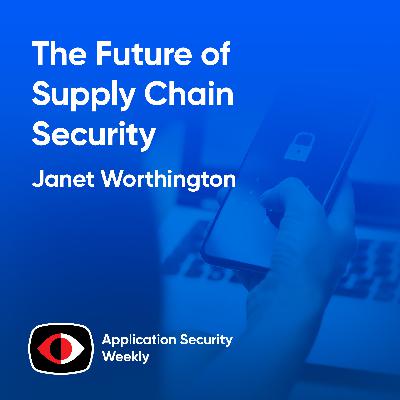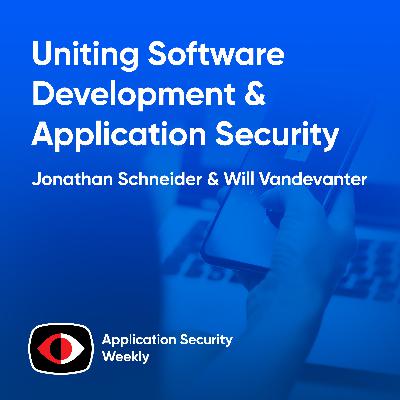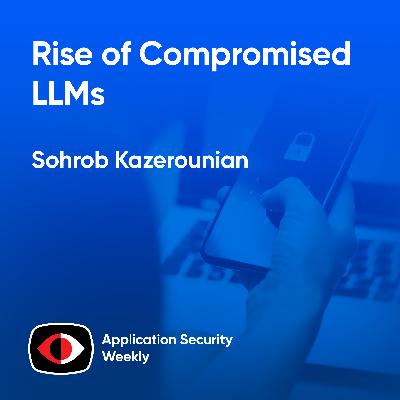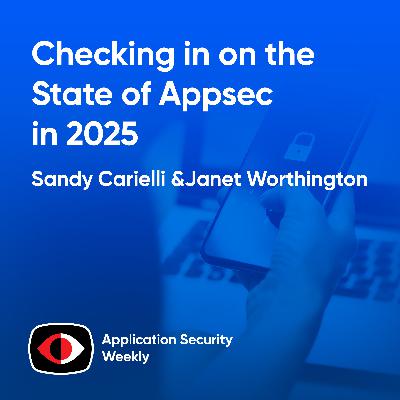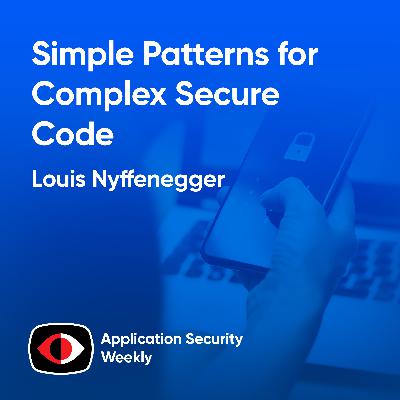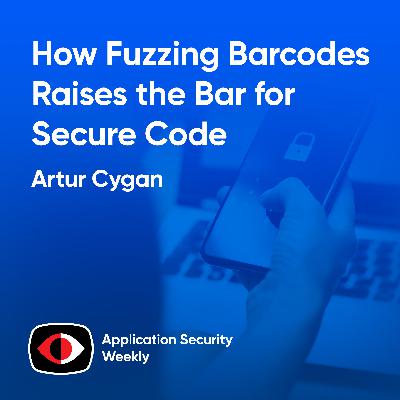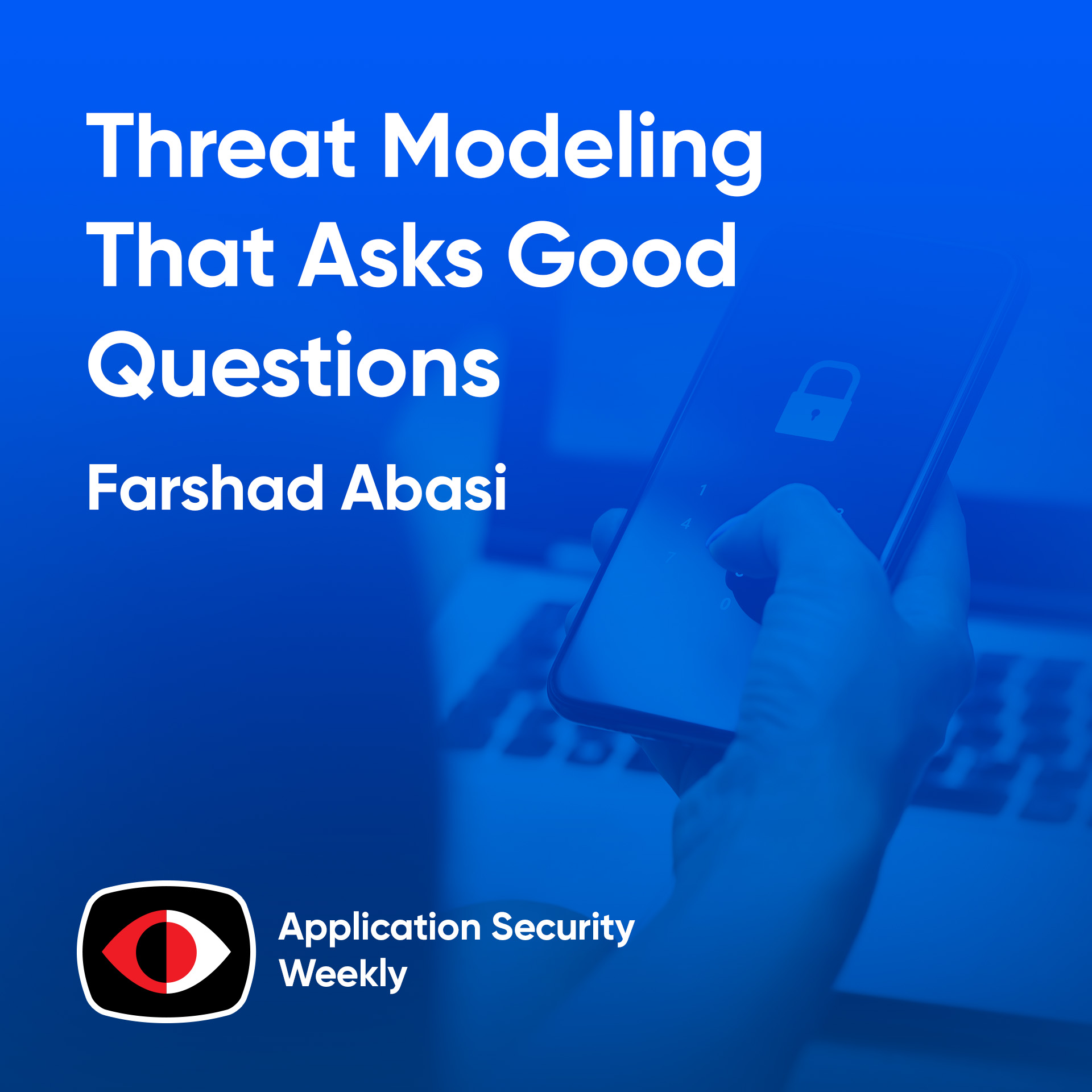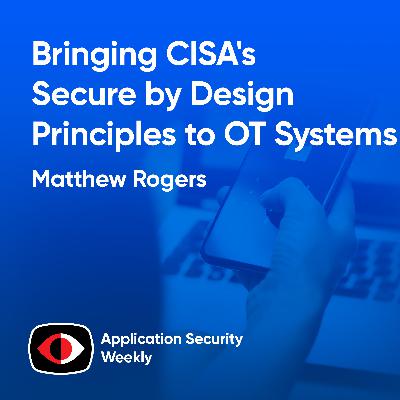Discover Application Security Weekly (Video)
Application Security Weekly (Video)

Application Security Weekly (Video)
Author: Security Weekly
Subscribed: 114Played: 3,779Subscribe
Share
© 2024 CyberRisk Alliance
Description
About all things AppSec, DevOps, and DevSecOps. Hosted by Mike Shema and John Kinsella, the podcast focuses on helping its audience find and fix software flaws effectively.
680 Episodes
Reverse
Ransomware attacks typically don't care about memory safety and dependency scanning, they often target old, unpatched vulns and too often they succeed. Rob Allen shares some of the biggest cases he's seen, what they have in common, and what appsec teams could do better to help them. Too much software still requires custom configuration to make it more secure. And too few software makers are embracing secure by default, let alone secure by design. In the news, passively monitoring geosynchronous satellite communications on the cheap, successful LLM poisoning of any size model with a single size dose, security engineering lessons from Signal's post-quantum crypto work, improving security for JavaScript in the browser, and more! This segment is sponsored by ThreatLocker. Visit https://securityweekly.com/threatlocker to learn more! Show Notes: https://securityweekly.com/asw-353
Interest and participation in the OWASP GenAI Security Project has exploded over the last two years. Steve Wilson explains why it was important for the project to grow beyond just a Top Ten list and address more audiences than just developers. He also talks about how the growth of AI Agents influences the areas that appsec teams need to focus on. Whether apps are created by genAI or directly use genAI, the future of securing software is going to be busy. Resources https://genai.owasp.org https://genai.owasp.org/llm-top-10/ LLM security book on Amazon at https://a.co/d/6LZoXxQ This segment is sponsored by The OWASP GenAI Security Project. Visit https://securityweekly.com/owasp to learn more! Show Notes: https://securityweekly.com/asw-352
Software has forever had flaws and humans have forever been finding and fixing them. With LLMs generating code, appsec has also been trying to determine how well LLMs can find flaws. Nico Waisman talks about XBOW's LLM-based pentesting, how it climbed a bug bounty leaderboard, how it uses feedback loops for better pentests, and how they handle (and even welcome!) hallucinations. In the news, using LLMs to find flaws, directory traversal in an MCP, another resource for learning cloud and AI security, spreadsheets and appsec, and more! Show Notes: https://securityweekly.com/asw-351
Dealing with vulns tends to be a discussion about prioritization. After all, there a tons of CVEs and dependencies with known vulns. It's important to figure out how to present developers with useful vuln info that doesn't overwhelm them. Francesco Cipollone shares how to redirect that discussion to focus on remediation and how to incorporate LLMs into this process without losing your focus or losing your budget. In the news, supply chain security in Ruby and Rust, protecting package repositories, refining CodeQL queries for security, refactoring and Rust, an OWASP survey, and more! Show Notes: https://securityweekly.com/asw-350
In the news, Microsoft encounters a new cascade of avoidable errors with Entra ID, Apple improves iOS with hardware-backed memory safety, DeepSeek demonstrates the difficulty in reviewing models, curl reduces risk by eliminating code, preserving the context of code reviews, and more! Show Notes: https://securityweekly.com/asw-349
This week, we chat with Scott Clinton, board member and co-chain of the OWASP GenAI Security Project. This project has become a massive organization within OWASP with hundreds of volunteers and thousands of contributors. This team has been cranking out new tools, reports and guidance for practitioners month after month for over a year now. We start off discussing how Scott and other leaders have managed to keep up with the crazy rate of change in the AI world. We pivot to discussing some of the specific projects the team is working on, and finally discuss some of the biggest AI security challenges before wrapping up the conversation. If you're neck-deep in AI like we are, I highly recommend checking out this conversation, and consider joining this OWASP project, sponsoring them, or just checking out what they have to offer (which is all free, of course). Segment Resources: Get started with the OWASP GenAI Security Project Register for the GenAI Application Security & Risk Summit on October 9th, 11am - 4pm EST This segment is sponsored by The OWASP GenAI Security Project. Visit https://securityweekly.com/owasp to learn more about them! Show Notes: https://securityweekly.com/asw-348
Up first, the ASW news of the week. At Black Hat 2025, Doug White interviews Ted Shorter, CTO of Keyfactor, about the quantum revolution already knocking on cybersecurity’s door. They discuss the terrifying reality of quantum computing’s power to break RSA and ECC encryption—the very foundations of modern digital life. With 2030 set as the deadline for transitioning away from legacy crypto, organizations face a race against time. Ted breaks down what "full crypto visibility" really means, why it’s crucial to map your cryptographic assets now, and how legacy tech—from robotic sawmills to outdated hospital gear—poses serious risks. The interview explores NIST's new post-quantum algorithms, global readiness efforts, and how Keyfactor’s acquisitions of InfoSec Global and Cipher Insights help companies start the quantum transition today—not tomorrow. Don’t wait for the breach. Watch this and start your quantum strategy now. If digital trust is the goal, cryptography is the foundation. Segment Resources: http://www.keyfactor.com/digital-trust-digest-quantum-readiness https://www.keyfactor.com/press-releases/keyfactor-acquires-infosec-global-and-cipherinsights/ For more information about Keyfactor’s latest Digital Trust Digest, please visit: https://securityweekly.com/keyfactorbh Live from BlackHat 2025 in Las Vegas, cybersecurity host Jackie McGuire sits down with Seemant Sehgal, founder of BreachLock, to unpack one of the most pressing challenges facing SOC teams today: alert fatigue—and its even more dangerous cousin, vulnerability fatigue. In this must-watch conversation, Seemant reveals how his groundbreaking approach, Adversarial Exposure Validation (AEV), flips the script on traditional defense-heavy security strategies. Instead of drowning in 10,000+ “critical” alerts, AEV pinpoints what actually matters—using Generative AI to map realistic attack paths, visualize kill chains, and identify the exact vulnerabilities that put an organization’s crown jewels at risk. From his days leading cybersecurity at a major global bank to pioneering near real-time CVE validation, Seemant shares insights on scaling offensive security, improving executive buy-in, and balancing automation with human expertise. Whether you’re a CISO, SOC analyst, red teamer, or security enthusiast, this interview delivers actionable strategies to fight fatigue, prioritize risks, and protect high-value assets. Key topics covered: - The truth about alert fatigue & why it’s crippling SOC efficiency - How AI-driven offensive security changes the game - Visualizing kill chains to drive faster remediation - Why fixing “what matters” beats fixing “everything” - The future of AI trust, transparency, and control in cybersecurity Watch now to discover how BreachLock is redefining offensive security for the AI era. Segment Resources: https://www.breachlock.com/products/adversarial-exposure-validation/ This segment is sponsored by Breachlock. Visit https://securityweekly.com/breachlockbh to learn more about them! Show Notes: https://securityweekly.com/asw-347
In this must-see BlackHat 2025 interview, Doug White sits down with Michael Callahan, CMO at Salt Security, for a high-stakes conversation about Agentic AI, Model Context Protocol (MCP) servers, and the massive API security risks reshaping the cyber landscape. Broadcast live from the CyberRisk TV studio at Mandalay Bay, Las Vegas, the discussion pulls back the curtain on how autonomous AI agents and centralized MCP hubs could supercharge productivity—while also opening the door to unprecedented supply chain vulnerabilities. From “shadow MCP servers” to the concept of an “API fabric,” Michael explains why these threats are evolving faster than traditional security measures can keep up, and why CISOs need to act before it’s too late. Viewers will get rare insight into the parallels between MCP exploitation and DNS poisoning, the hidden dangers of API sprawl, and why this new era of AI-driven communication could become a hacker’s dream. Blog: https://salt.security/blog/when-ai-agents-go-rogue-what-youre-missing-in-your-mcp-security Survey Report: https://content.salt.security/AI-Agentic-Survey-2025_LP-AI-Agentic-Survey-2025.html This segment is sponsored by Salt Security. Visit https://securityweekly.com/saltbh for a free API Attack Surface Assessment! At Black Hat 2025, live from the Cyber Risk TV studio in Las Vegas, Jackie McGuire sits down with Apiiro Co-Founder & CEO Idan Plotnik to unpack the real-world impact of AI code assistants on application security, developer velocity, and cloud costs. With experience as a former Director of Engineering at Microsoft, Idan dives into what drove him to launch Apiiro — and why 75% of engineers will be using AI assistants by 2028. From 10x more vulnerabilities to skyrocketing API bloat and security blind spots, Idan breaks down research from Fortune 500 companies on how AI is accelerating both innovation and risk. What you'll learn in this interview: - Why AI coding tools are increasing code complexity and risk - The massive cost of unnecessary APIs in cloud environments - How to automate secure code without slowing down delivery - Why most CISOs fail to connect security to revenue (and how to fix it) - How Apiiro’s Autofix AI Agent helps organizations auto-fix and auto-govern code risks at scale This isn’t just another AI hype talk. It’s a deep dive into the future of secure software delivery — with practical steps for CISOs, CTOs, and security leaders to become true business enablers. Watch till the end to hear how Apiiro is helping Fortune 500s bridge the gap between code, risk, and revenue. Apiiro AutoFix Agent. Built for Enterprise Security: https://youtu.be/f-_zrnqzYsc Deep Dive Demo: https://youtu.be/WnFmMiXiUuM This segment is sponsored by Apiiro. Be one of the first to see their new AppSec Agent in action at https://securityweekly.com/apiirobh. Is Your AI Usage a Ticking Time Bomb? In this exclusive Black Hat 2025 interview, Matt Alderman sits down with GitLab CISO Josh Lemos to unpack one of the most pressing questions in tech today: Are executives blindly racing into AI adoption without understanding the risks? Filmed live at the CyberRisk TV Studio in Las Vegas, this eye-opening conversation dives deep into: - How AI is being rapidly adopted across enterprises — with or without security buy-in - Why AI governance is no longer optional — and how to actually implement it - The truth about agentic AI, automation, and building trust in non-human identities - The role of frameworks like ISO 42001 in building AI transparency and assurance - Real-world examples of how teams are using LLMs in development, documentation & compliance Whether you're a CISO, developer, or business exec — this discussion will reshape how you think about AI governance, security, and adoption strategy in your org. Don’t wait until it’s too late to understand the risks. The Economics of Software Innovation: $750B+ Opportunity at a Crossroads Report: http://about.gitlab.com/software-innovation-report/ For more information about GitLab and their report, please visit: https://securityweekly.com/gitlabbh Live from Black Hat 2025 in Las Vegas, Jackie McGuire sits down with Chris Boehm, Field CTO at Zero Networks, for a high-impact conversation on microsegmentation, shadow IT, and why AI still struggles to stop lateral movement. With 15+ years of cybersecurity experience—from Microsoft to SentinelOne—Chris breaks down complex concepts like you're a precocious 8th grader (his words!) and shares real talk on why AI alone won’t save your infrastructure. Learn how Zero Networks is finally making microsegmentation frictionless, how summarization is the current AI win, and what red flags to look for when evaluating AI-infused security tools. If you're a CISO, dev, or just trying to stay ahead of cloud threats—this one's for you. This segment is sponsored by Zero Networks. Visit https://securityweekly.com/zerobh to learn more about them! Show Notes: https://securityweekly.com/asw-346
The EU Cyber Resilience Act joins the long list of regulations intended to improve the security of software delivered to users. Emily Fox and Roman Zhukov share their experience education regulators on open source software and educating open source projects on security. They talk about creating a baseline for security that addresses technical items, maintaining projects, and supporting project owners so they can focus on their projects. Segment resources: github.com/ossf/wg-globalcyberpolicy github.com/orcwg baseline.openssf.org Show Notes: https://securityweekly.com/asw-345
A smaller attack surface should lead to a smaller list of CVEs to track, which in turn should lead to a smaller set of vulns that you should care about. But in practice, keeping something like a container image small has a lot of challenges in terms of what should be considered minimal. Neil Carpenter shares advice and anecdotes on what it takes to refine a container image and to change an org's expectations that every CVE needs to be fixed. Show Notes: https://securityweekly.com/asw-344
Open source software is a massive contribution that provides everything from foundational frameworks to tiny single-purpose libraries. We walk through the dimensions of trust and provenance in the software supply chain with Janet Worthington. And we discuss how even with new code generated by LLMs and new terms like slopsquatting, a lot of the most effective solutions are old techniques. Resources https://www.forrester.com/blogs/make-no-mistake-software-is-a-supply-chain-and-its-under-attack/ https://www.forrester.com/report/the-future-of-software-supply-chain-security/RES184050 Show Notes: https://securityweekly.com/asw-343
Maintaining code is a lot more than keeping dependencies up to date. It involved everything from keeping old code running to changing frameworks to even changing implementation languages. Jonathan Schneider talks about the engineering considerations of refactoring and rewriting code, why code maintenance is important to appsec, and how to build confidence that adding automation to a migration results in code that has the same workflows as before. Resources https://docs.openrewrite.org https://github.com/openrewrite Then, instead of our usual news segment, we do a deep dive on some recent vulns NVIDIA's Triton Inference Server disclosed by Trail of Bits' Will Vandevanter. Will talks about the thought process and tools that go into identify potential vulns, the analysis in determining whether they're exploitable, and the disclosure process with vendors. He makes the important point that even if something doesn't turn out to be a vuln, there's still benefit to the learning process and gaining experience in seeing the different ways that devs design software. Of course, it's also more fun when you find an exploitable vuln -- which Will did here! Resources https://nvidia.custhelp.com/app/answers/detail/a_id/5687 https://github.com/triton-inference-server/server https://blog.trailofbits.com/2025/07/31/hijacking-multi-agent-systems-in-your-pajamas/ https://blog.trailofbits.com/2025/07/28/we-built-the-security-layer-mcp-always-needed/ Show Notes: https://securityweekly.com/asw-342
A successful strategy in appsec is to build platforms with defaults and designs that ease the burden of security choices for developers. But there's an important difference between expecting (or requiring!) developers to use a platform and building a platform that developers embrace. Julia Knecht shares her experience in building platforms with an attention to developer needs, developer experience, and security requirements. She brings attention to the product management skills and feedback loops that make paved roads successful -- as well as the areas where developers may still need or choose their own alternatives. After all, the impact of a paved road isn't in its creation, it's in its adoption. Show Notes: https://securityweekly.com/asw-341
AI is more than LLMs. Machine learning algorithms have been part of infosec solutions for a long time. For appsec practitioners, a key concern is always going to be how to evaluate the security of software or a system. In some cases, it doesn't matter if a human or an LLM generated code -- the code needs to be reviewed for common flaws and design problems. But the creation of MCP servers and LLM-based agents is also adding a concern about what an unattended or autonomous piece of software is doing. Sohrob Kazerounian gives us context on how LLMs are designed, what to expect from them, and where they pose risk and reward to modern software engineering. Resources https://www.vectra.ai/research Show Notes: https://securityweekly.com/asw-340
What are some appsec basics? There's no monolithic appsec role. Broadly speaking, appsec tends to branch into engineering or compliance paths, each with different areas of focus despite having shared vocabularies and the (hopefully!) shared goal of protecting software, data, and users. The better question is, "What do you want to secure?" We discuss the Cybersecurity Skills Framework put together by the OpenSSF and the Linux Foundation and how you might prepare for one of its job families. The important basics aren't about memorizing lists or technical details, but demonstrating experience in working with technologies, understanding how they can fail, and being able to express concerns, recommendations, and curiosity about their security properties. Resources: https://cybersecurityframework.io https://owasp.org/www-project-cheat-sheets/ https://blog.cloudflare.com/rfc-8446-aka-tls-1-3/ https://aflplus.plus/ https://writings.stephenwolfram.com/2023/02/what-is-chatgpt-doing-and-why-does-it-work/ Show Notes: https://securityweekly.com/asw-339
Appsec still deals with ancient vulns like SQL injection and XSS. And now LLMs are generating code along side humans. Sandy Carielli and Janet Worthington join us once again to discuss what all this new code means for appsec practices. On a positive note, the prevalence of those ancient vulns seems to be diminishing, but the rising use of LLMs is expanding a new (but not very different) attack surface. We look at where orgs are investing in appsec, who appsec teams are collaborating with, and whether we need security awareness training for LLMs. Resources: https://www.forrester.com/blogs/application-security-2025-yes-ai-just-made-it-harder-to-do-this-right/ Show Notes: https://securityweekly.com/asw-338
Manual secure code reviews can be tedious and time intensive if you're just going through checklists. There's plenty of room for linters and compilers and all the grep-like tools to find flaws. Louis Nyffenegger describes the steps of a successful code review process. It's a process that starts with understanding code, which can even benefit from an LLM assistant, and then applies that understanding to a search for developer patterns that lead to common mistakes like mishandling data, not enforcing a control flow, or not defending against unexpected application states. He explains how finding those kinds of more impactful bugs are rewarding for the reviewer and valuable to the code owner. It involves reading a lot of code, but Louis offers tips on how to keep notes, keep an app's context in mind, and keep code secure. Segment Resources: https://pentesterlab.com/live-training/ https://pentesterlab.com/appsecschool https://deepwiki.com https://daniel.haxx.se/blog/2025/05/29/decomplexification/ Show Notes: https://securityweekly.com/asw-337
Fuzzing has been one of the most successful ways to improve software quality. And it demonstrates how improving software quality improves security. Artur Cygan shares his experience in building and applying fuzzers to barcode scanners, smart contracts, and just about any code you can imagine. We go through the useful relationship between unit tests and fuzzing coverage, nudging fuzzers into deeper code paths, and how LLMs can help guide a fuzzer into using better inputs for its testing. Resources https://blog.trailofbits.com/2024/10/31/fuzzing-between-the-lines-in-popular-barcode-software/ https://github.com/crytic/echidna https://github.com/crytic/medusa https://lcamtuf.blogspot.com/2014/11/pulling-jpegs-out-of-thin-air.html Show Notes: https://securityweekly.com/asw-336
What makes a threat modeling process effective? Do you need a long list of threat actors? Do you need a long list of terms? What about a short list like STRIDE? Has an effective process ever come out of a list? Farshad Abasi joins our discussion as we explain why the answer to most of those questions is No and describe the kinds of approaches that are more conducive to useful threat models. Resources: https://www.eurekadevsecops.com/agile-devops-and-the-threat-modeling-disconnect-bridging-the-gap-with-developer-insights/ https://www.threatmodelingmanifesto.org https://kellyshortridge.com/blog/posts/security-decision-trees-with-graphviz/ In the news, learning from outage postmortems, an EchoLeak image speaks a 1,000 words from Microsoft 365 Copilot, TokenBreak attack targets tokenizing techniques, Google's layered strategy against prompt injection looks like a lot like defending against XSS, learning about code security from CodeAuditor CTF, and more! Show Notes: https://securityweekly.com/asw-335
CISA has been championing Secure by Design principles. Many of the principles are universal, like adopting MFA and having opinionated defaults that reduce the need for hardening guides. Matthew Rogers talks about how the approach to Secure by Design has to be tailored for Operational Technology (OT) systems. These systems have strict requirements on safety and many of them rely on protocols that are four (or more!) decades old. He explains how the considerations in this space go far beyond just memory safety concerns. Segment Resources: https://www.cisa.gov/sites/default/files/2025-01/joint-guide-secure-by-demand-priority-considerations-for-ot-owners-and-operators-508c_0.pdf https://www.youtube.com/watch?v=vHSXu1P4ZTo Show Notes: https://securityweekly.com/asw-334



